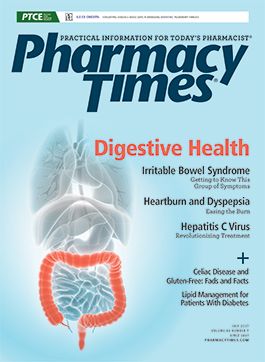Case Studies (July 2017)
What should these pharmacists do?
CASE 1
WB is a 57-year-old man who reports to the clinic complaining of frequent but intermittent cramping pain in his left leg induced by walking. His primary care physician performed a resting ankle-brachial index (ABI) test and found WB to have an ABI <0.90 (normal value: 1.0-1.4), diagnosing him with peripheral artery disease (PAD). WB has a past medical history of hypertension, which is well managed with ramipril 10 mg. He does not take any other prescription medications. The physician asks you, the pharmacist, what the best pharmacologic treatment strategy would be for WB at this time.
What recommendations regarding pharmacotherapy would you provide WB’s physician?
CASE 2
EN is a 45-year-old woman who comes to your pharmacy to pick up a refill of her fluticasone inhaler. She has a past medical history of seasonal allergies and asthma. Her medications include 10 mg of loratidine once a day, 2 puffs of albuterol 6 hours as needed for shortness of breath, and 2 puffs of a 250-mcg fluticasone dry powder inhaler twice a day. EN mentions that her asthma symptoms have been worse in the last few weeks and she has had to use her albuterol inhaler “a couple of times per day.” She states that her father uses a tiotropium inhaler to manage his chronic obstructive pulmonary disease (COPD) and he is doing great. EN asks you whether tiotropium could be an option for treating her asthma.
What recommendations would you provide to EM?SEE THE ANSWERS BELOW
ANSWERSCASE 1: WB is suffering from intermittent claudication (typically caused by obstruction of leg arteries), as well as a reduced ABI. According to the 2016 American Heart Association/American College of Cardiology Guideline on the Management of Patients With Lower Extremity Peripheral Artery Disease, either symptomatic PAD (1/A recommendation) or an ABI ≤0.90 (even in an asymptomatic patient, IIA/C recommendation) would be reasonable indications for antiplatelet therapy with either 75-325 mg of aspirin or 75 mg per day of clopidogrel. Initiating antiplatelet therapy in PAD patients can reduce their risk of myocardial infarction, stroke, or vascular death. In addition to aspirin or clopidogrel, all patients with PAD should receive a statin, as the use of the drug class has been shown to improve cardiovascular and limb related outcomes. Cilostazol 100 mg twice daily could also be initiated for additional symptom improvement now or in the future, with the understanding it may take as long as 3 months before its effects are evident. As the pharmacist, you might recommend WB be initiated on clopidogrel 75 mg once daily and atorvastatin 80 mg once daily for his PAD. WB’s use of an angiotensin-converting enzyme inhibitor would already be in line with current treatment guidelines.
CASE 2: Tiotropium is an inhaled long-acting muscarinic antagonist (LAMA) that was originally approved for the treatment of COPD and has recently gained approval for management of asthma. In patients like EN who are already taking an inhaled corticosteroid, adding a LAMA such as tiotropium has shown to improve symptoms and reduce the incidence of asthma exacerbations compared with an inhaled corticosteroid alone. Adding a LAMA to an inhaled corticosteroid has similar effects on asthma control as adding a long-acting beta-agonist.
Advise EN that a LAMA such as tiotropium could be an option in addition to her fluticasone for management of her asthma and recommend that she speak to her physician about whether it is an appropriate choice for her.
Dr. Coleman is a professor at the University of Connecticut School of Pharmacy in Storrs, Connecticut.Dr. Baker is an associate professor at the University of Connecticut School of Pharmacy in Storrs, Connecticut.

